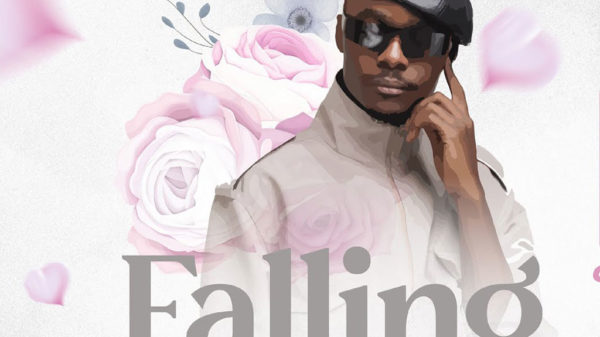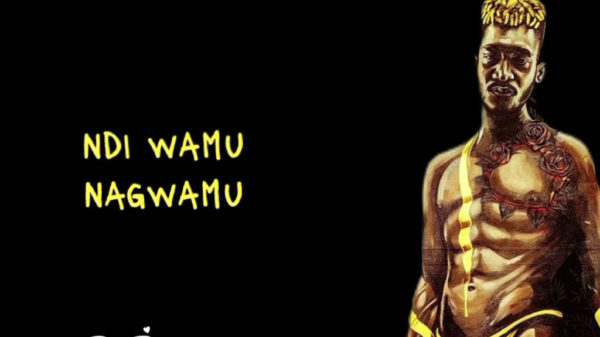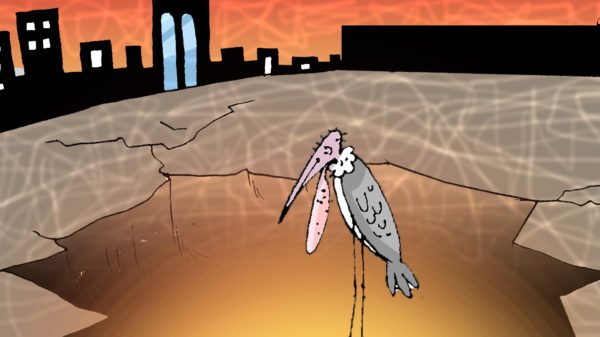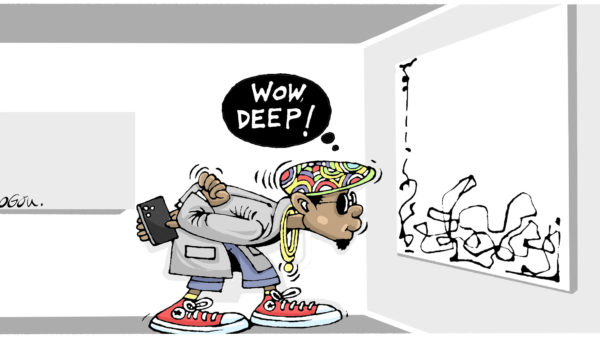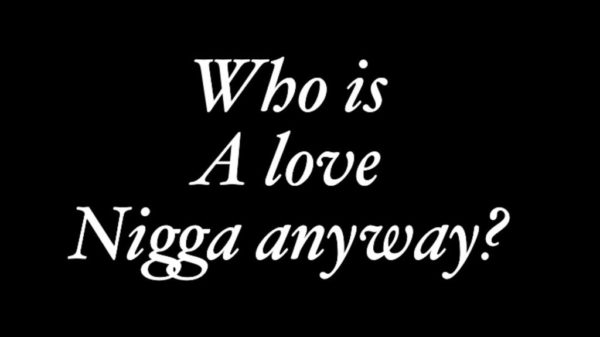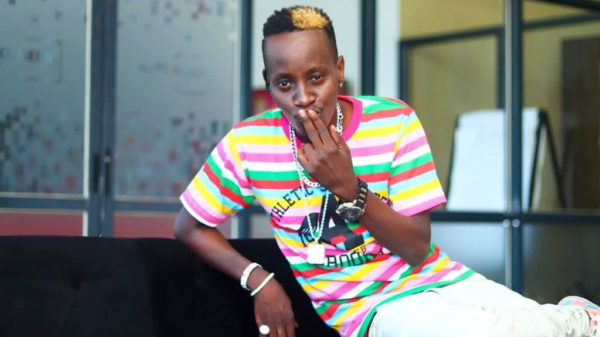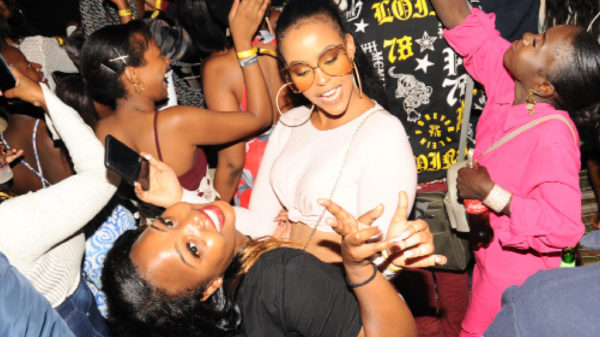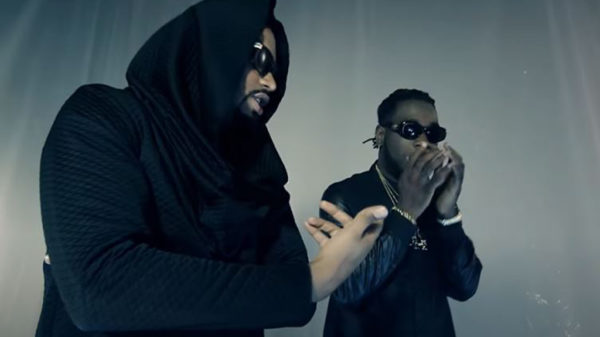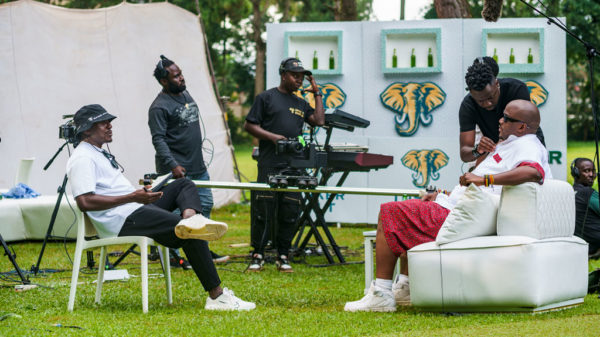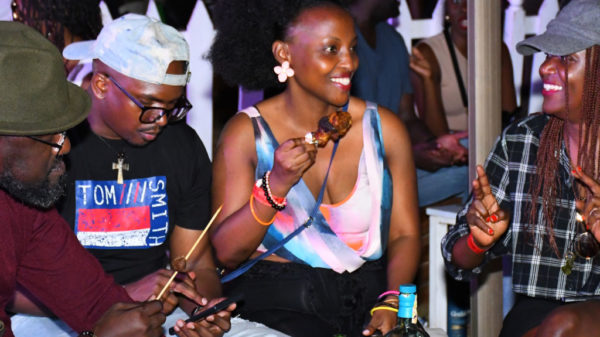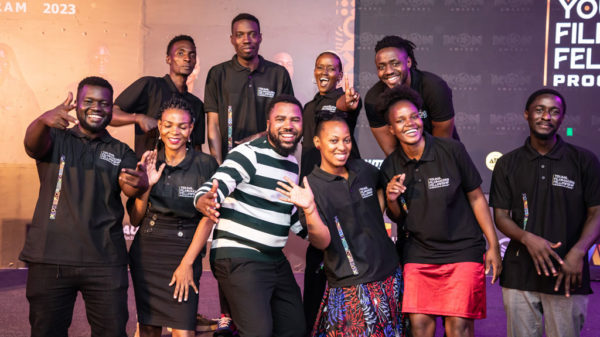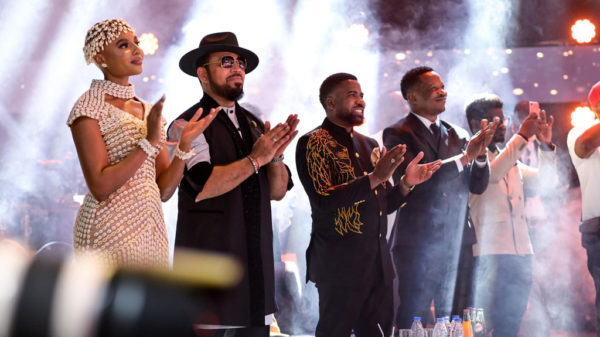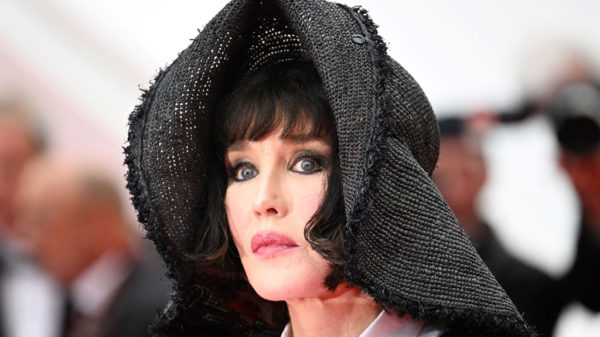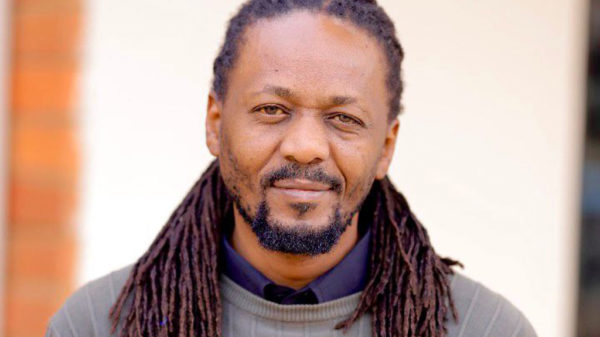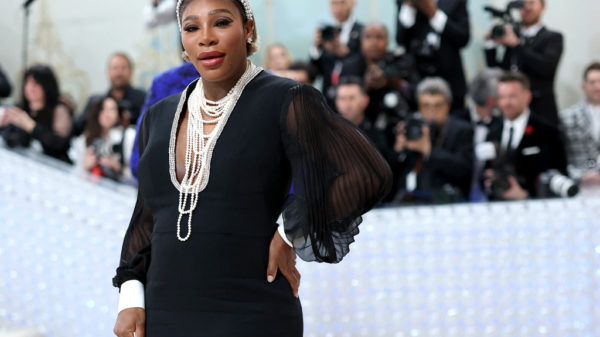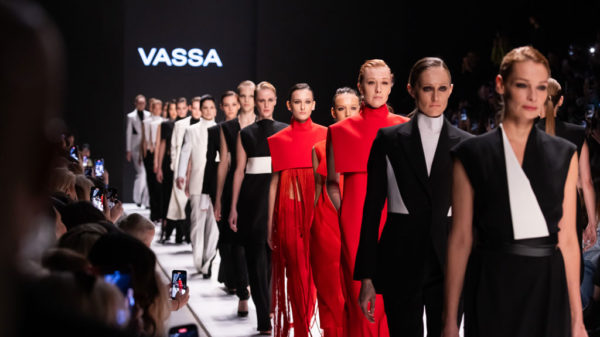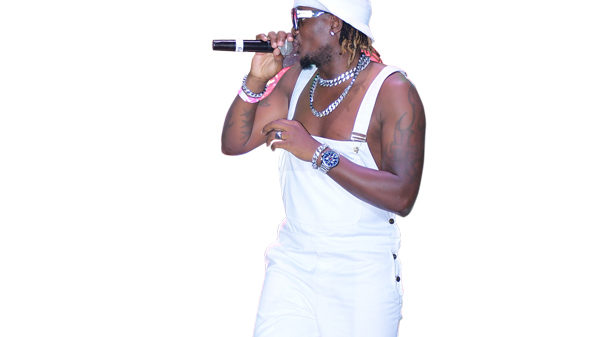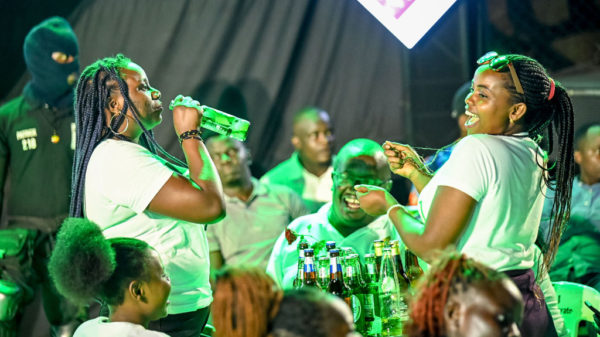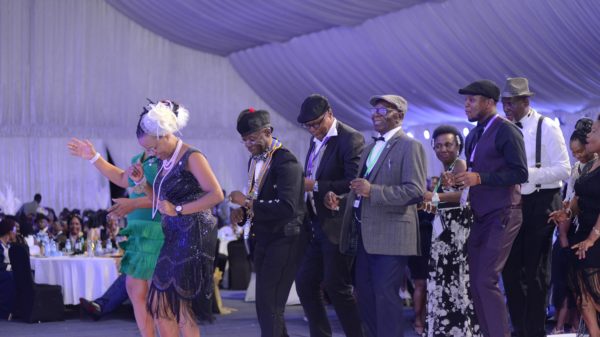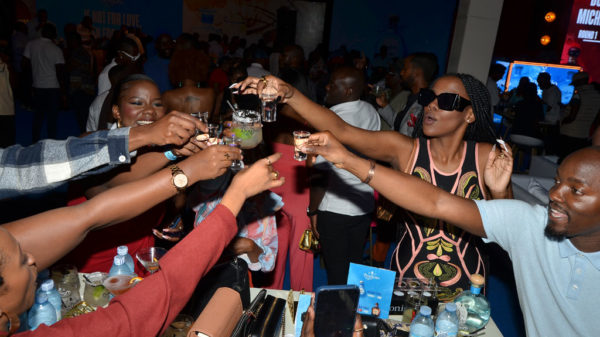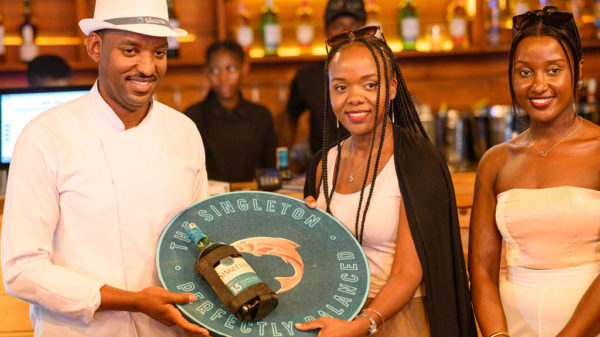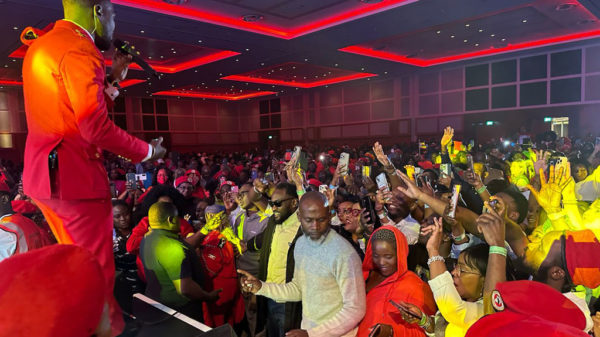
Pilgrims who were not able to enter the Catholic or Anglican shrines in Namugongo follow live televised proceedings from outside. PHOTO BY JOSEPH KIGGUNDU
World over, culture and art has been shaped by outstanding events in a particular country’s history.
For instance, just by looking at all films, visual art or novels produced by Rwandan creatives after 1994, the theme of the 100 days genocide will predominately or in a subtle way be felt.
In the same manner, slavery and racism always create an appearance in mixed race American movies, and just like Rwanda or other places, they don’t really have to be written into scripts directly – they simply show up since they have become part of life.
In Uganda, it is hard to talk about the Roman Catholic or the Anglican faiths without talking about the Uganda martyrs – of course, they were not the first converts but their death in the long run has become a very big boost to faith in the country.
According to a 2014 census, over 84 per cent of the Ugandan population was Christians of all denominations with Roman Catholics and Anglicans having the largest number of adherents – for many, this would interpret into a number of narratives, art works, novels, films, music and theatricals directly inspired by the martyrs.
But it is not really the case, according to Moses Serugo, journalist and art critic, Ugandans have been slow despite the many narratives the country is blessed with.
“We don’t have a culture of documenting for posterity. We are always waiting for white saviours to tell our stories be they in print or cinematically,” he says.
Serugo says that Ugandans are contented with the annual June 3 pageantry and ritual and the fact that it’s a public holiday.
“Yet given the interest in the story by people that stream in from across the border, the souvenir market could use a film or mini-series rendering told from so many perspectives; Kabaka Mwanga, martyrs like Kizito and Balikuddembe, the missionaries themselves, the non-Christian martyrs!”
With 23 Anglican and 24 Catholic martyrs, many easily believe a creative has more than 50 human stories to deal with; for instance, each of these has a family that probably had to move on after their leader were killed.
And of course, other angles surrounding the personalities of Kabaka Mwanga especially on events that could have happened before and after the execution of the matters.
With the way Ugandans have failed to find a language to address subtle themes that have been thrown around the martyrdom story, playwrights, screen writers and other artists could easily take up the job.
Or not!
Andrew Benon Kibuuka, an actor and president, Uganda Performing Artist’s Association, says that the delicate nature of the topic that is the Uganda martyrs could be one reason artists are staying away from it.
“It is hard telling a story of the martyrs without making the Kabaka then look bad,” he says adding that some loyalists believe the martyrs were executed because they were disobedient.
He also notes that much of the present information about the martyrs are largely one sided favouring the religious narrative yet every time art in Uganda has challenged faith, threats have been made.
For instance, he says that on two occasions, he has had to plead with the Catholic church after an artist expressed their craft in a way that did not go down well with the church; one of such artists has been Tittie Tabel whose Nsonyiwa Faza video featuring comedian Amooti playing a priest did not amuse some faithful.
Years later, Dr Hilderman of the Ameria fame found himself in the same position after making an entrance at a concert dressed as a bishop.
Even Kibuuka himself has been in hot soup after a section of Islam loyalists promised to beat him up for portraying one Bumali, a Hajji that never paid his boda ride fares.
He however notes that some of the Uganda martyrs story has been documented by contemporary singers and choral artists.
Kibuuka also says that in the past years, Bakayimbira Dramactors did produce a production Bali Balalu? (Were they Mad), a play that was well received when it was staged.
“The production was questioning the decisions of the martyrs that accepted to die for a God they had not known for long,” he says.
But as far as visual art is concerned, much of the sculptures, batik, metal and paintings have only been done after they were commissioned by the church.
As far as film is concerned, Ashraf Semwogerere’s Mukajanga: Passion of the Uganda Martyrs became a Martyrs’ Day favourite after release in 2009, much as the movie was highly praised, it was also criticised for avoiding matters like homosexuality.
In his defence though, Semwogerere noted that the topic was too complex and thus would need an independent feature film.
However, with Uganda Communication Commission clamping down any content they deem to be in promotion of gay tendencies, it is hard to imagine if that of the Uganda martyrs with the theme can be allowed to pass.
In 2016, a different film Final Flames, produced by John Ssempebwa, deputy executive officer Uganda Tourism Board, was released, the film had a different view of history going ahead to acquit Kabaka Mwanga of the martyrs’ killings.
Talking to this paper, Ssempebwa notes that Mukajanga was well received which has encouraged them to create a prequel of it, this time about Matia Mulumba.
He though says that there is little content about Uganda martyrs because many Ugandan artists are still obsessed with negative stories about the country.
“It is not just the martyrs that are suffering, many stories around our history have not been told,” he says adding that many are interested in telling fiction stories of ghettos, sorcery and other evils but not the historical content.
He however says that not all is lost as the tourism board is now having talks with film associations to work out ways they can collaborate; ideally, the collaboration sees the the board help film makers access locations and in return, film makers tell a story that in a way will promote the country.
Just like visual art, not much has been done in the literature docket, some books have of course been written but many of them are by Catholic priests that either just supplement what is known or interpret it.



